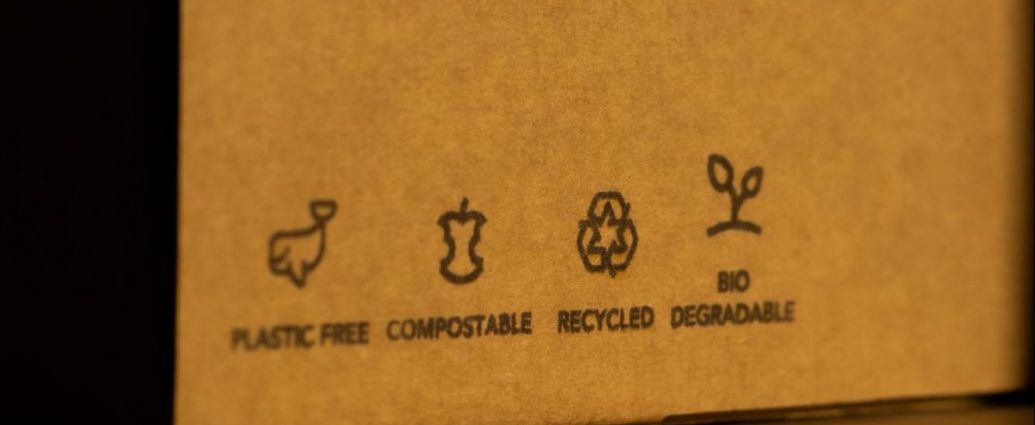As the world goes greener, more consumers want ethical and sustainable products and packaging. The younger generations in particular are more eco-conscious and want to see a change. You want to have a greener business to keep up with the times, you say? Wondering where to start, how to be successful and ensure your business doesn’t suffer from the change? Transitioning to sustainable packaging can help!
Recognizing the problem and responding to consumer criticism, numerous of corporations have recently vowed to lessen the environmental impact of their packaging. Several small businesses in the food and beverage industry have been doing the same thing, while others at the forefront of packaging innovation for years. For example, BOSS Foods vegan superfood bars use compostable wrappers made by TIPA. TIPA’s unique bio-based blend has all of the qualities of regular plastic while also being certified for industrial and home composting. TIPA checks the shelf life of each brand with which it works to verify that it has the same shelf life as conventional packaging. Achieving sustainable packaging won’t happen overnight and a lot can go into the process to ensure the best way to do it for your business.
First, understand where you are and where you want to be. Ask yourself questions like: what kind of materials are in your packaging, which materials are the most and least harmful, are you already recycling the materials you can, and which ones you want to change. These can be answered and quantified by gathering and analyzing data on the materials used in your packaging as well as their impact over its entire existence. Grasping these concerns is critical to laying the groundwork for a holistic solution that minimizes trade-offs between sustainability areas such as recyclability and carbon footprint. Poor sustainability initiatives with major trade-offs can diminish brand value, especially with increasing public consciousness and understanding spreading beyond plastic sustainability. It is important to understand the packaging product well so that you are using the right definitions when referring to sustainable terms. For example, “recyclable” definitions vary: something could be recyclable but barely, and recycling processing plants may or may not accept that type of plastic. Also, “composting” might refer to either home composting or industrial composting. Industrial composting requires high temperatures and specialized microbes to break down.
The next step in the transition is to research. Take your time to check product reviews and ratings. Try changing one or two packaging items to test them out while you are still doing research. If you have regular trusted customers, ask them if they would like to test out the new packaging first to hear their feedback before testing them on random customers. Don’t have regulars? Test them yourself or with family or friends. Take notes of their concerns, thoughts, experiences, and opinions on the new packaging. There may be a lot to take into consideration. Look at the compatibility between your current packaging and the one you’re interested in changing to. Notice the durability of the possible new packaging and how it will affect your product.
The transition from your current packaging to sustainable packaging should be cautious and a little slow. The transition period is crucial to having successful sustainable packaging, a happy business, and happy customers. This is a good time for trial and error, trying to change everything at once can be overwhelming and be counterproductive in the end.
It is best to order in small volumes, if possible, the first few times around. This helps compare the overall performance in comparison to the old packaging. Small volumes of orders also give the ability to transition back or to different packaging without a lot of money being spent. This can also be a good time to test packaging for your general customers- put up a flyer asking customers to leave reviews and opinions on the new packaging through Yelp or social media. If the feedback is negative, you can change to a different packaging quickly because you ordered in small quantities. Small volumes are great for a temporary change during the trial and era stage, while big volumes are best for permanent change when the solution is found.
Make sure you are factoring in the prices of new packaging products and making the necessary adjustments to your business to help it succeed while going green! Extra shipping costs may vary depending on packaging type, weight, and size. This is all-important to consider especially if your products are only sold online. If there is a small increase in spending for sustainable packaging, factor this into product pricing. Adding a few cents to the price of a product can go unnoticed by customers and make up for the extra spending on sustainable packaging!
Our world is always changing and adapting. Keeping up with new sustainable technology and materials ensures you are getting the most efficient and sustainable materials for your business! If you’ve found what works for your business, don’t forget to boast about the new sustainable packing to your customers. It can create awareness and bring in new customers who are searching for greener companies to try. Track the company’s progress to make sure this switch is not harmful and track your sustainability through your packaging’s footprint. Considering all these factors will help make your company transition to sustainable packaging as smoothly as possible!
—-Anna Langlois

